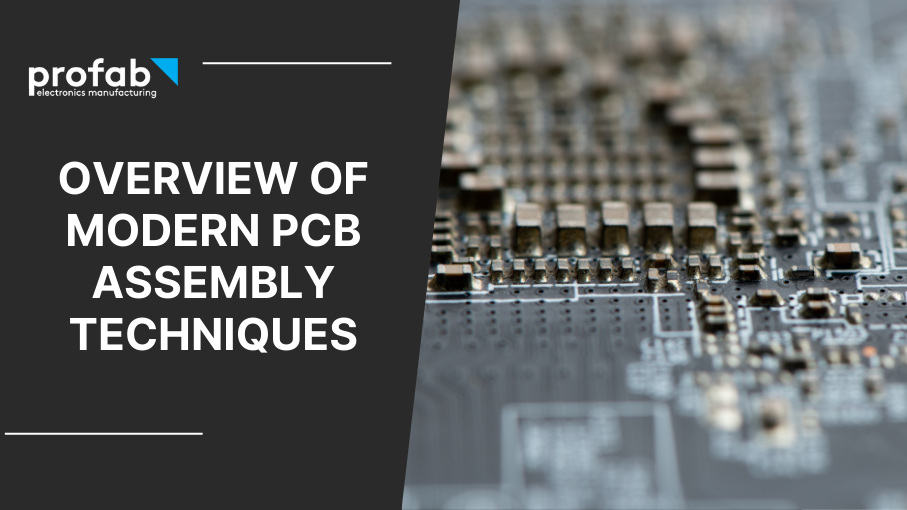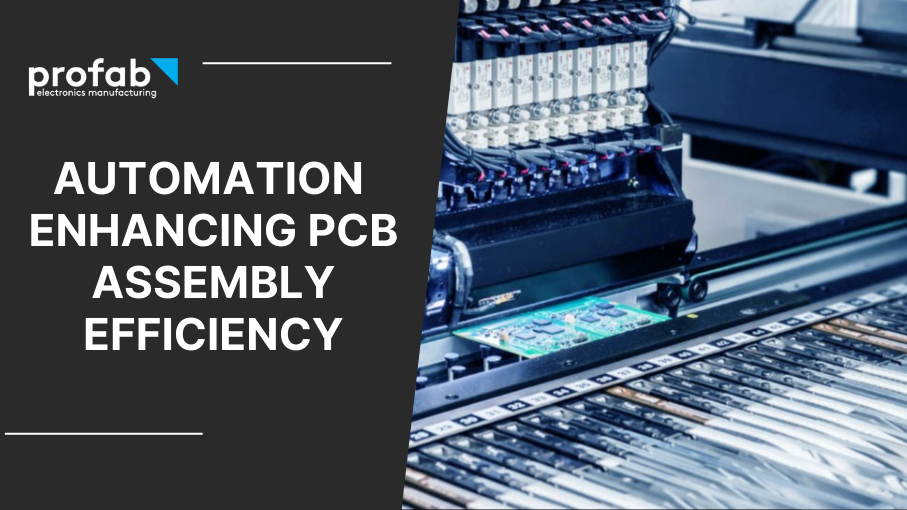
Understanding the Differences Between EMS and ODM in the Electronics Manufacturing Industry
A Comparative Analysis of Electronics Manufacturing Service (EMS) and Original Design Manufacturing (ODM) Models: Functions, Advantages, and Choosing the Right Approach for Your Business
The electronics manufacturing industry has witnessed rapid growth in recent years, with countless companies looking to outsource various aspects of their production processes. Two key players in this industry are Electronics Manufacturing Service (EMS) providers and Original Design Manufacturing (ODM) providers. Understanding their differences and similarities is crucial for businesses planning to outsource manufacturing services. This article will provide an in-depth comparison and analysis of EMS and ODM providers while offering insights into their functions, industries served, and the advantages and challenges associated with each model.
Introduction
Definition of Electronic Manufacturing Services (EMS)
Electronic Manufacturing Service providers are contract-based companies that offer end-to-end solutions for the manufacturing of electronic devices, components, and assemblies. Electronic manufacturing companies are responsible for managing and executing various aspects of the production process, such as design engineering, printed circuit board assembly, quality control, and supply chain management. EMS companies work closely with customers, often referred to as original equipment manufacturers (OEMs), to optimize production operations and deliver cost-effective, high-quality products.
Definition of Original Design Manufacturing (ODM)
Original Design Manufacturing (ODM) providers create, design, and manufacture fully customized products for their customers, typically businesses or brands. In contrast to electronics manufacturing services providers, ODMs develop their own intellectual property (IP), which can be tailored to a customer's specific needs and market demands. The ODM model offers greater flexibility and innovation in product design, enabling businesses to introduce unique, differentiated products in the market. However, the trade-off is that ODMs often retain IP ownership, thereby limiting the customer's control over the final product.
Historical Background of EMS and ODM
Emergence of Electronics Manufacturing Companies
The concept of electronic manufacturing services emerged in the 1970s and gained prominence with the rapid growth of the electronics industry. As electronics became more complex and competitive, OEMs sought specialized partners to handle various manufacturing processes which gave rise to the EMS industry. Electronics manufacturing companies offered an effective outsourcing solution by taking care of manufacturing, supply chain management, and other related services. This allowed OEMs to focus on research, development, and marketing, enabling them to reduce costs, improve efficiency, and respond faster to market dynamics.
Emergence of ODM Companies
ODM companies arose in response to the specialized demands of customers and the rapid technological advancements in the electronics industry. ODMs were well-positioned to create unique, innovative products that catered to specific market niches. With the rise of consumer electronics and technological innovations, the demand for ODM services grew. ODMs enable businesses to access cutting-edge designs, advanced technologies, and accelerated time-to-market for customized products.
Core Functions of EMS Providers
Manufacturing Services
PCB Assembly
An electronics manufacturing services provider specializes in printed circuit board (PCB) assembly, a critical step in the production of electronic devices. They are responsible for assembling electronic components on a PCB, ensuring their proper functioning by soldering, testing, and inspecting the connections.
Testing Services
EMS companies offer testing services to ensure the quality and functionality of electronic components and assemblies. These services are vital in detecting defects, identifying manufacturing issues, and maintaining the integrity of the final product.
Supply Chain Management
Procurement Process
Electronics Manufacturers are responsible for managing the procurement of raw materials, components, and sub-assemblies. They often work with a global network of suppliers and partners to source the necessary parts while maintaining cost-efficiency, quality assurance, and compliance with regulatory requirements.
Inventory Management
Effective inventory management is crucial for the success of any manufacturing operation. An EMS company manages various aspects of inventory, such as material planning, warehousing, and logistics. This ensures a steady supply of resources for production and timely delivery of the final products to customers.
Electronic Contract Manufacturing Services
An EMS provider may offer specific contract manufacturing services such as prototyping circuit boards, design engineering, and end-of-life support. These services enable an original equipment manufacturer to streamline their production processes and plan more effectively, mitigating potential risks and reducing timelines.
Production Processes
High Mix Low Volume
EMS companies often excel in high mix low volume (HMLV) manufacturing, producing a wide variety of electronic products in small quantities. This flexible production approach caters to businesses with unique and specialized product requirements, reducing costs and increasing competitiveness.
Mass Production
Some EMS providers also have the capability to handle large-scale, high volume production, ensuring efficient and cost-effective manufacturing of high-quantity, standardized products.
Core Functions of ODM Providers
Innovative Product Design and Development
ODM providers specialize in creating new and unique product designs for customers. They employ skilled engineers, designers, and technicians who collaborate to develop innovative, market-ready products that fulfil the specific needs and requirements of each customer.
Customization for Different Brands
ODM providers offer a high level of customization, tailoring each product to align with the customer's brand identity and target audience. This involves modifying product designs, selecting the appropriate components, and incorporating features that differentiate the product from competitors.
Intellectual Property Ownership
Unlike EMS, ODM providers develop and retain ownership of the IP associated with their designs. This allows them to offer the same design or a modified version to multiple customers, while still retaining legal control over the design.
Manufacturing Services and Production Processes
ODM providers offer manufacturing services for the products they design. They possess advanced manufacturing capabilities and in-depth knowledge of their designs, enabling efficient, high-quality production that meets the customer's specifications.
Key Differences Between EMS and ODM
Ownership of Design
One of the main differences between EMS and ODM is the ownership of the design. EMS providers typically work with customer-supplied designs, whereas ODM companies create their designs, often retaining IP ownership.
Level of Customization
ODM providers offer greater customization than their EMS counterparts. While EMS involves producing products based on customer-provided designs and specifications, ODMs develop and tailor their designs according to customer needs and requirements.
Scope of Services Offered
EMS providers primarily focus on manufacturing and supply chain management, while ODM companies offer a broader range of services encompassing design, development, and production.
Intellectual Property Rights
IP rights differ significantly between EMS and ODM providers. ODMs retain IP ownership for their designs, whereas EMS companies generally do not possess any IP rights, as they work with customer-supplied designs.
Industries Served by EMS and ODM Providers
Consumer Electronics
Both EMS and ODM providers cater to the consumer electronics market, which includes products like smartphones, computers, televisions, and wearable devices. EMS providers work with OEMs to manufacture these devices, while ODMs develop customized, innovative solutions tailored to specific brands and target audiences.
Medical Devices
EMS and ODM providers serve the medical device industry by manufacturing equipment such as patient monitors, diagnostic instruments, and surgical devices. EMS companies focus on delivering high-quality, reliable products, whereas ODMs specialize in developing technologically advanced, customized medical equipment.
Automotive and Consumer Electronics
The automotive and consumer electronics sectors rely heavily on EMS and ODM providers for various electronic components, systems, and assemblies. EMS companies manufacture parts and sub-assemblies for advanced driver-assistance systems (ADAS) and vehicle infotainment systems, while ODMs develop innovative technologies to enhance vehicle performance and user experience.
Telecommunications and Networking
Both EMS and ODM providers also serve the telecommunications and networking industries, producing devices such as routers, switches, and servers. EMS providers focus on ensuring product quality and reliability, while ODMs deliver customized, advanced networking solutions tailored to specific customer requirements.
Selecting the Right Model: EMS or ODM
Business Objectives
Businesses must consider their overall objectives and strategy when deciding between EMS and ODM partnerships. OEMs that require a high level of control over product design may prefer EMS providers, while those seeking greater innovation and customization may benefit more from ODM services.
Product Complexity
The complexity of the product also plays a significant role in selecting the appropriate manufacturing model. For simple, low-risk products with established designs, an EMS provider might be more suitable. In contrast, innovative, high-risk products with complex design requirements may require the expertise of an ODM company.
Market Entry Strategy
The desired market entry speed also influences the choice between EMS and ODM. If a business aims to reach the market quickly, an EMS provider may be more appropriate as it can work with existing designs and materials. However, if differentiation and innovation are vital for market success, an ODM partnership can offer distinct advantages in crafting a unique market presence.
Intellectual Property Protection
Businesses should carefully assess their IP requirements and the level of protection needed for their products. While EMS providers do not typically pose IP ownership issues, ODMs often retain IP rights for the designs they create. OEMs must carefully evaluate the IP implications of partnering with ODM providers and negotiate terms accordingly.
Advantages of Collaborating with EMS Companies
Cost Optimization
EMS providers enable OEMs to optimize costs by streamlining production processes, taking advantage of economies of scale, and eliminating the need for heavy investments in manufacturing facilities.
Supply Chain Expertise
EMS providers offer extensive supply chain management experience, ensuring the availability of materials, managing inventory, and optimizing logistics operations.
Quality Control and Compliance
EMS companies maintain strict quality control measures and adhere to compliance with regulatory standards, ensuring the production of reliable, high-quality products.
Scalability and Flexibility
Working with EMS providers allows businesses to scale their production capacity as needed, adapting to changing market conditions and customer requirements.
Advantages of Collaborating with ODM Companies
Faster Time-to-Market
ODM companies can help businesses accelerate their time-to-market by providing innovative, ready-made designs tailored to specific customer needs. This allows companies to quickly launch new products, stay ahead of competitors, and adapt to market trends.
Product Differentiation
By partnering with ODMs, businesses can access specialized design capabilities that enable them to develop unique, differentiated products that stand out in the market. This advantage is particularly valuable in competitive industries, where customization and innovation are essential for success.
Enhanced Innovation Capabilities
Working with ODM providers allows OEMs to leverage the ODM's expertise in cutting-edge technologies, advanced materials, and design trends. This collaboration can result in more innovative, advanced products that cater to evolving customer needs and preferences.
Intellectual Property Creation
Although ODMs often retain IP ownership of their designs, collaborating with ODM providers can still result in the creation of new IPs for the OEM. This can be particularly valuable in cases where the ODM develops unique features, components, or materials that contribute to a broader IP portfolio for the OEM.
Challenges in EMS and ODM Collaboration
Communication and Cultural Barriers
When partnering with EMS or ODM providers, particularly those located in different countries, businesses may face communication and cultural challenges. Overcoming these barriers requires effective communication, understanding of cultural differences, and mutual respect.
Intellectual Property Issues
As mentioned earlier, IP ownership can be a major challenge when collaborating with ODM providers. Businesses must carefully assess their IP requirements and negotiate agreements that balance the need for innovation with the protection of their IP assets.
Quality Control and Assurance
While EMS and ODM providers strive to maintain high-quality standards, ensuring consistent quality and meeting critical safety and regulatory compliance can be challenging. OEMs must actively monitor and collaborate with their manufacturing partners to achieve optimal quality control and assurance.
Pricing and Cost Negotiations
Establishing fair pricing and cost structures can be a complex task in EMS and ODM partnerships. Both parties must consider factors such as production volumes, material costs, and overall project complexity to determine appropriate pricing and maintain profitability.
Trends Shaping the EMS and ODM Market
Several key trends are shaping the EMS and ODM market, including the growing demand for smart devices, growth of the Internet of Things (IoT), and increased focus on sustainability and eco-friendly manufacturing practices. Businesses in these sectors must stay up-to-date with industry trends and consider their implications when selecting manufacturing partners.
Conclusion: Navigating the Complexities of EMS and ODM Partnerships
Selecting the right manufacturing partner – whether EMS or ODM – requires careful consideration of multiple factors, including business objectives, product complexity, market strategy, and IP protection. Understanding the core functions, strengths, and challenges of both EMS and ODM providers can help businesses make informed decisions that suit their specific needs.
By choosing the appropriate manufacturing model and collaborating effectively with EMS or ODM partners, businesses can optimize their operations, achieve cost-efficiency, and bring innovative, high-quality electronic products to the market.
As a reliable electronics contract manufacturer, we at Profab Electronics specialize in electronics manufacturing services for a wide range of industries. We are committed to helping businesses navigate the complexities of the electronics manufacturing industry and make informed decisions that align with their objectives. To learn more about our services and expertise, or to discuss potential collaboration, please contact us today.
About Profab Electronics
Profoundly embedded in the electronics manufacturing sector, Profab Electronics has been steadfast in its commitment to deliver excellence for over three decades. Our unparalleled experience, fortified by our stringent quality standards, positions us as a trusted partner in the realm of Electronics Manufacturing Services (EMS).
We're an ISO 9001 and AS9100 certified company, and our adherence to these globally recognized standards attests to our unyielding quest for quality. Our team comprises experts who hold formative training on the latest IPC standards, ensuring that we consistently produce electronic products of the highest caliber.
Our proficiency lies in PCB assembly, offering a spectrum of services ranging from Surface Mount (SMT) to Through-Hole Assembly. From the initial stages of prototyping to high volume pcb assembly, we offer comprehensive solutions to meet client requirements.
At Profab Electronics, we synergize our expertise and experience to deliver high-quality electronic products. Our unwavering commitment to quality, innovation, and customer satisfaction has established Profab Electronics as a leader in the electronics manufacturing industry. Trust us to bring your technological visions to life.
Latest Posts

Learn about our state-of-the-art Surface Mount and Through-Hole Technologies, sophisticated soldering processes, and rigorous quality control methods that define today's industry standards.

Learn about our advanced component placement, solder paste printing, and automated inspection systems that revolutionize the assembly process.

Discover how our adherence to ISO 9001 and AS 9100 standards, IPC solder training, and meticulous inspection processes ensure the precision and accuracy of every PCB we produce, underpinning our unwavering commitment to quality.